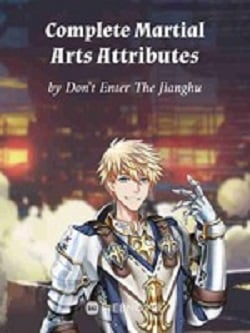©WebNovelPub
Champion Creed-Chapter 514 - 189: The Supreme God in a Unique Class (Request for Monthly Tickets!)_2
Chapter 514: 189: The Supreme God in a Unique Class (Request for Monthly Tickets!)_2
Clifford Robinson was hesitant. He was already 31 years old and what he needed most was the security of a long-term deal.
A one-year contract was not suitable for him.
If he didn’t perform well next season, given his age, his income might continue to decline.
At this time, Pete Babcock approached him.
The Hawks didn’t have the salary cap space to sign Robinson, and couldn’t even afford to pay $1 million.
However, he proposed a plan: sign first and then trade with the Trail Blazers at a low price, so Clifford Robinson could keep his Bird rights. Although Robinson would earn less this season, next season the Hawks would gamble on re-signing Clifford Robinson using his Bird rights, offering him a contract of at least four years, which would last until he was 36.
"The captain never skimps on anyone who has contributed to the team." Babcock told Robinson.
The choice was Robinson’s, if he signed with the Suns as a free agent and lost his Bird rights, he could secure a $1 million contract, but no matter his performance next season, he would be at a disadvantage in the negotiations.
If he retained his Bird rights and did a sign-and-trade to the Hawks, he could negotiate a higher ceiling for his contract.
After weighing the pros and cons, he accepted the Hawks’ sign-and-trade offer, aiming for a higher ceiling for his retirement contract.
Thus, Clifford Robinson re-signed with the Trail Blazers for an $800,000 annual salary, and the Hawks traded him to Atlanta in exchange for last season’s shooter Eldridge Recasner and Anthony Miller, who had a three-point shooting percentage of 41.4%.
Many media outlets gave this trade an A rating.
Despite his stats and form dropping, Clifford Robinson still managed a 15+4+3 last season. The Hawks securing him for $800,000, even for just one year, was almost like getting it for free.
However, right after, Pete Babcock made another trade that only received a C rating.
He traded this year’s 27th pick Ed Gray and the old blue-collar worker Chucky Brown to the Mavericks in exchange for Kurt Thomas, who had only played 18 games last season because of an injury.
The Mavericks wanted to take a chance on the lottery ticket that was Ed Gray, who last season with the California Golden Bears averaged 24.8 points, 2.2 assists, four rebounds, and 1.7 steals per game, and was named Pac-10 Player of the Year.
The issue was that, as a shooting guard, his height of 190 cm was considered too short, which is why he fell to the late first round.
As for Kurt Thomas, his college performance was explosive, averaging 29+14 in his senior year.
But upon entering the NBA, the magic of Kurt Thomas, who was only 206 cm tall, seemed to disappear. In college, he played as a center, but this height was a bit short even for playing as a power forward in the NBA, let alone center. Thus, he struggled in the past two seasons.
Therefore, the Mavericks decisively gave up on Thomas and acquired the scratch-off lottery ticket that was Ed Gray.
The media did not look favorably on this trade, and people also noticed something:
"The Hawks have now acquired two forwards who are under 210 cm tall, plus with Alan Henderson, who they already had, they have three forward swingmen. What about the center? As it stands, there are no players over 210 cm tall on the Atlanta Hawks’ roster!"
The good news is, Pete Babcock finally brought in a player with a height advantage after two trades.
But the bad news is, this height advantage was only at the point guard position.
The Hawks used the veteran Greg Anderson as an added sweetener and a 1998 second-round pick to trade with the Seattle SuperSonics for Eric Snow.
At 191 cm and 93 kg, he was like a tank on the point guard position.
But beyond height and weight, Eric Snow lacked talent.
He was a sedate old-school type of point guard, and his style of play was mostly like this: dribble up the court, watch teammates’ movements, think, pass the ball, and occasionally drive in for a layup. Jump shots? His free throw shooting percentage was only 50% in his rookie season and only 71% last season.
That was his game, never making mistakes, but incredibly dull.
According to his high school coach: "Eric is too mature, he’s like another coach on the court, always ensuring that the team is moving in the right direction."
Snow’s ability to hold a place in the NBA was 90% because of his defense. His height and weight allowed him to defend both the point and shooting guard positions. He made up for his lack of talent with fierce confrontation and an active defensive attitude, keeping a grim expression and relentlessly sticking to you all game.
Eventually, Pete Babcock signed Bruce Bowen, who had played in Europe for many years, and then traded for the virtually unknown Ben Wallace, ceasing further movements in the transfer market.
Currently, the Hawks’ roster includes Roger, Pippen, Stevie Smith, Alan Henderson, Kurt Thomas, Eric Snow, Bruce Bowen, Clifford Robinson, and Ben Wallace.
This was undoubtedly a major overhaul, with only Stevie Smith and Alan Henderson remaining from last season’s main rotation.
This season’s Hawks and last season’s team, which failed to reach the playoffs, were completely different teams.
From a roster standpoint, Roger believed this was already a solid nine-man main rotation.
While the introduced players were different, the Hawks’ choices had some things in common—they were cheap, could play multiple positions, and most importantly, they were players who were extremely willing to defend and had a tough style of play.







